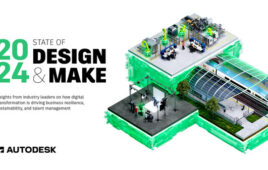From catching the right criminal to offering hope in overturning convictions, facial recognition offers public safety and the judicial system an effective way out of bureaucratic processes.
Facial Recognition in Public Safety
Facial recognition is one of the easiest and most commonly used biometric tools.
When it comes to public safety, however, the technology has had a tentative roll-out. Only China has widely deployed facial recognition, which debuted in train stations during the Lunar New Year high season. Some nations, such as Japan, plan to use the technology for high profile occasions, like the Olympics or other major sporting events. There have been two major ethical concerns: development bias and facial recognition ethics of use.
In the former, facial recognition must be developed before it can be implemented. A major part of that development is deep learning, where the program perfects its mapping ability and positive identification tools by practicing on massive data sets. Unfortunately, many of these data sets are not diverse. They largely overrepresent Caucasian individuals as well as men, people without disabilities and middle-aged adults.
Consequently, facial recognition software can be faulty when mapping and matching faces of people of color, women and the elderly. The racial element is especially troubling, particularly in the United States. Black men and queer women of color are disproportionately imprisoned compared to other populations. An inaccurate facial recognition software has the potential to further that disparity; moreover, it could lead to a higher number of mistaken identities due to false matches.
Regarding ethics, issues have arisen in areas from necessity, complicity, impartiality, bias, accountability and oversight. Some software developers are not comfortable developing the technology for public safety. In governance systems like the United States, there are many jurisdictions on local, state and Federal levels. Outside groups worry that a patchwork deployment will lead to unethical use without oversight. Many concerns surround the issue of privacy. Who will own facial image data? How will police and public security team share this information? Will it be securely stored or vulnerable to malicious actors?
In the UK, the independent Biometrics and Forensics Ethics Group (BFEG) released an ethical framework to guide the technology. Moreover, developers have sought to diversify their data sets, even if it means generating images through simulation. Companies providing the technology have investigated how to secure image databases, such as local storage. Finally, governments at all levels are creating task forces to analyze responsible ways to use facial recognition for public safety without compromising ethics.
Pending this responsible development, facial recognition has the ability to simplify identifying known or suspected terrorists, especially in crowded places, reducing the chances of racial profiling. It could also speed up time consuming administrative tasks, such as documentation, line-ups, and minor security. Moreover, on a positive outlook, facial recognition, and AI in general, can be used to hastily clear overturned convictions by matching individuals to their booked photos attached to records.
What is Facial Recognition and How Does It Work?
Facial recognition is a subcategory of biometrics. It’s made possible by advanced computing components, such as processors and memory, and Artificial Intelligence tools, such as machine learning. Facial recognition is when a device uses a camera to identify a face for security or other purposes.
The facial recognition process is a five-step system. First, computers are taught to “map” faces using key measurements and patterns from the face. For example, computers use software to map the distance between eyes, nostrils and ears. They also scan for “nodal points,” such as high cheekbones or prominent jaw lines. This first step creates abstract geometric maps that can be added to a database. That database can vary in size from a large corporate resource or on locally stored memory with one or two entries.
From that point on, the image processing device can “capture” faces, map them and see if their face map matches any faces in the database. In the case of security, if the face map does not match, the person is not allowed access. In the case of criminal line-ups, if the face map matches the suspect, then they could be charged.
The early stages of facial recognition started with software programs that could identify faces in photo albums. Google and Facebook still use this facial recognition algorithm for tagging photos. More interactive applications have gone mainstream. Apple includes facial recognition on the iPhone X for users to unlock their phones. One can also find facial recognition in banks and airports, like the Delta International Terminal in Atlanta. The most advanced systems now can distinguish faces in real time in crowds. In China, police officers use intelligence-enabled glasses that scan crowds for offenders evading the law, among other offenses.
SEALEVEL
www.sealevel.com
Filed Under: AI • machine learning, ENGINEERING SOFTWARE, MOTION CONTROL




